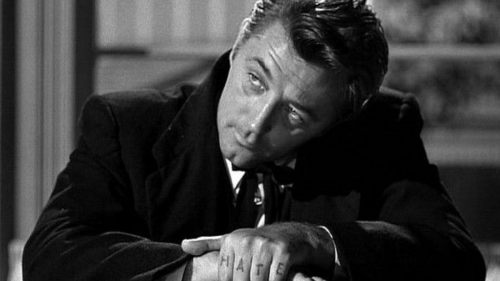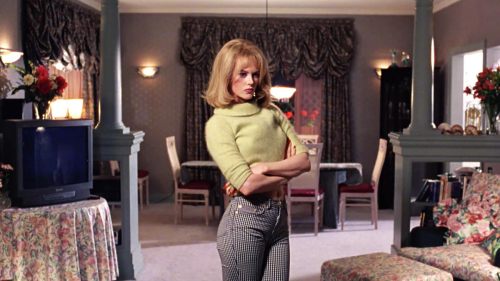Cover to Credits: THE BRIDGES OF MADISON COUNTY
"The book was better" is a phrase heard often in conversations about book-to-film adaptations. "Don't judge a book by its movie" is another common jab. While we've all uttered some version of this sentiment at one point or another, there have been those rare occasions when the opposite is true. As a lifelong bookworm and cinephile, I've discovered that whether I read the book before or after seeing the movie can have a profound influence on my enjoyment of the story across both mediums. In this column, I’ll be checking out old and new adaptations to further explore both sides of that experience. In the process, I hope to unveil how these two vastly different mediums work together to tell the same story, from cover to credits.
---
“All of these years and lifetimes we have been moving toward one another.”
- Robert James Waller, The Bridges of Madison County
Each year on her birthday, Francesca Johnson allows the details of a certain four days from her past to flood her memory, recollections she chooses to abstain from every other day of the year as “a matter of survival.” Those four days were spent suspended in time, as if in a dream, falling in love with a stranger named Robert Kincaid. A man whose presence in Madison County, Iowa was not likely to go unnoticed by the residents, and whose presence in her home would prove impossible to forget. “We are the choices we have made,” she tells Kincaid on their last night together, taking great effort to rationalize her decision to stay instead of running away with him. Until that moment, all of Francesca’s choices have rooted her in Iowa, where she traveled from Italy to live as a farmer’s wife and became the mother of two children she adored. Before this self-proclaimed cowboy showed up at her door, she had sacrificed a few girlhood dreams, true, but none of her choices meant sacrificing the greatest love she’d ever known. The Bridges of Madison County is a love story, pure and simple. But as with any love story, it is made up of its own unique details; it'd be unfair to call it either pure or simple.
When comparing Robert James Waller’s novel to Clint Eastwood’s film, the variations lie in the structure and perspective of the narrative. While the book begins from Robert Kincaid’s point of view, the feature begins with Francesca, and the story becomes much more hers than his. Beginning after her death, Francesca’s adult children arrive at the farmhouse to find that their mother’s final wishes deviate from the burial plan their late father had arranged. From there, the story unfolds through their mother’s journals, leading them back to 1965 and every detail of those four days in which she has enveloped herself every year since. Needless to say, the information of her love affair comes as quite a shock to the Johnson siblings, forcing them to reevaluate everything they ever knew about their mother and their traditional upbringing. Waller presents the narrative as a true story, although it is fictional, seemingly daring the reader to argue that his tale never happened. Eastwood, on the other hand, portrays it in such a straightforward and credible manner that it's impossible to argue these two people didn’t really meet and fall in love in a modest kitchen in Iowa so many years ago.

Sure, the setup of this love story is nothing groundbreaking or unfamiliar: two people meet, strike up a conversation, and fall in love. It’s a sincere and humble romance, and it’s quite beautiful in its simplicity. Even so, we’ve read and seen enough of these stories to know that it’s when and how the couple meet and the obstacles they encounter along the way that separates one tale from the next. Francesca Johnson (Meryl Streep) was forty-five years old, married, and the mother of two teenagers by the time photographer Robert Kincaid (Clint Eastwood) drove his beat-up pickup truck into her life. A younger, or even a much older, Francesca would have allowed nothing to stop her from following her heart, but at this moment in time she’s a woman of integrity and she has everything to lose. Streep, who is as brilliant as ever, brings a unique physicality to the role, illustrating Francesca’s resolve to wholeheartedly embrace the life she has chosen. A lingering Italian accent makes her feel displaced, like some exotic creature as she hustles about the house, sacrificing her time and energy to care for her family. Yet, watching her move you quickly realize that she is a part of that house, that it is her energy that brings it to life. No matter how much she may daydream of faraway places, she is home.

An intriguing departure from his previous work, Eastwood was sixty-five when he directed the feature and starred as Robert Kincaid – who is said to be fifty-two in the book. Described as “something of a gypsy,” Kincaid shows up on Francesca’s doorstep free as a bird with no plans, no connections, and no place he calls home. A globetrotter, he travels light with only a few cameras, a taste for adventure, and an assignment from the National Geographic to photograph the historic bridges of Madison County. The prospect of encountering a woman the likes of Francesca is likely the farthest thing from his mind, let alone the prospect of falling in love. Eastwood easily embodies the spirit of the sophisticated loner and the progression of the romance seems effortless once he and Streep are on screen together. Considering that the runtime consists almost entirely of the two of them talking, the success of the adaptation was solely dependent on the nature of their chemistry.

The challenge of any book-to-film adaptation is to create a visual that measures up to an already beloved story. In 1992, Robert James Waller beautifully conveyed the happenstance meeting of these two lovers on the page, giving Eastwood the blueprint to bring them in all their unique and heartbreaking detail to the screen. In the film, every conversation, lingering glance, and awkward gesture builds to the striking visual of their separation. The image of Francesca clinging to the door handle and her final chance to run toward love. What stops her is the belief that what she has with Robert would cease to exist the moment they let the screen door of the farmhouse slam shut behind them. In the end, all the unique details that make up this love story are allowed to live forever, not because of someone's sentimental ideals about emotional attachment, but because it is a love stopped in its tracks. Sacrificing their future allows what they shared to live forever, encased in those four beautiful days in 1965 where nothing is allowed to touch it, to taint or damage it. Where she can return to it each year on her birthday and wrap herself up in the warmth of it.



